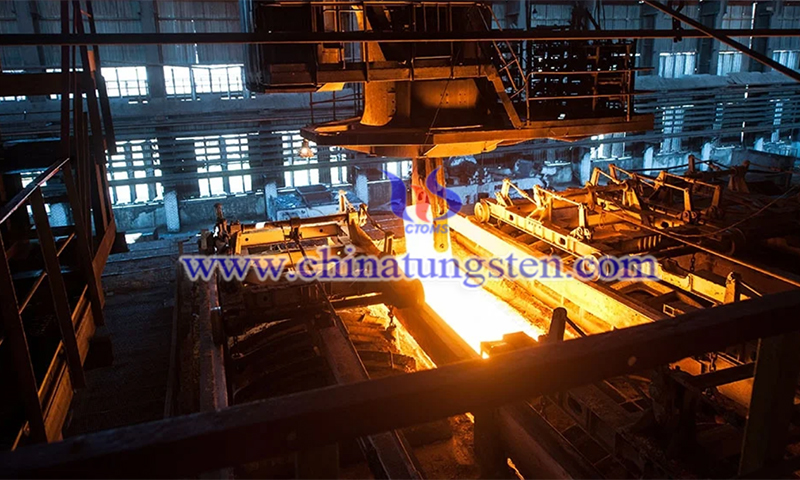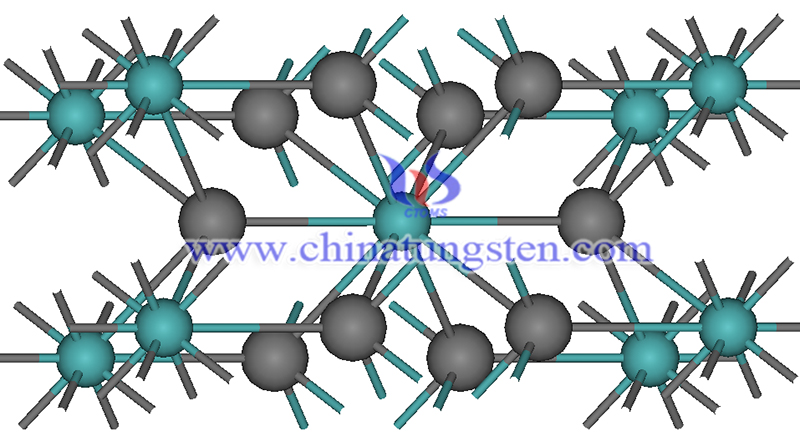Molybdenum Disilicide: A Catalyst for Converting Carbon Dioxide into Fuel
- Details
- Category: Tungsten Information
- Published on Wednesday, 16 March 2022 19:12
Molybdenum disilicide (MoSi2), a catalyst that converts carbon dioxide into fuel, has helped researchers take another step toward solving global warming by converting CO2 into fuel. Using theoretical models, researchers at the Queensland University of Technology's Centre for Materials Science have determined that six metals (nickel, niobium, palladium, rhenium, and rhodium) have been found to be efficient in the reaction that converts CO2 into sustainable clean energy.
The study, published in Nature Communications on July 30, was led by Queensland University of Technology researchers Professor Aijun Du and Professor Yuantong Gu. The study investigated how individual atoms of metals react with two-dimensional "ferroelectric" materials through simulations at the Australian National University's National Computational Infrastructure.
Ferroelectric materials hold a positive charge on one side and a negative charge on the other, and when a voltage is applied, this polarization can be reversed. In a theoretical model, the researchers found that adding catalyst metal atoms to ferroelectric materials could convert greenhouse gases into the desired chemical fuel.

Once the polarity is reversed, this state remains a catalyst for converting carbon dioxide. Although the use of single-atom catalysts to reduce CO2 has been proposed a decade ago, this study takes the field a big step forward.
"We have designed a special chemical catalyst that can convert the greenhouse gas CO2 into the desired chemical fuel. The conversion efficiency can be controlled in a feasible way," said the researchers involved in the project, "which means that for the first time we have developed the ability to speed up or slow down a chemical reaction, or even switch chemical reactions."
"Carbon dioxide is a major cause of global warming due to the greenhouse effect, and converting it into chemical fuels is not only important for our environment but also helps solve the energy crisis." Dr. Zhu, the lead author of the study, said the work provides guidance for the design of new catalysts that could have a significant impact on the chemical industry.
Historically, knowledge and the production of new materials such as molybdenum disilicide have contributed to human and social progress, from the refining of copper and iron to the manufacture of the semiconductors on which our information society depends today. However, many of these materials and their preparation methods have contributed to the environmental problems we face.
Approximately 90 billion tons of raw materials: mainly metals, minerals, fossil substances, and biomass, are extracted each year for the production of raw materials. Between now and 2050, this figure is expected to double. Most of the MoSi2 raw materials extracted are in the form of non-renewable substances that place a heavy burden on the environment, society, and the climate. The production of MoSi2 materials accounts for about 25 percent of greenhouse gas emissions, while metal smelting consumes about 8 percent of the energy generated by humans.

The molybdenum disilicide industry has a strong research environment in electronic and photonic materials, energy materials, glass, hard materials, composites, light metals, polymers and biopolymers, porous materials, and special steels. Hard materials (metals) and specialty steels currently account for more than half of Sweden's materials sales, while glass and energy materials are the strongest growth areas.
The market trend of new materials, including MoSi2, is one of the main directions of scientific and technological development in the 21st century. With the development of science and technology, people develop new materials MoSi2 on the basis of traditional materials and according to the results of modern science and technology. New materials are divided into metallic materials, inorganic non-metallic materials (such as ceramics, gallium arsenide semiconductors, etc.), organic polymer materials, and advanced composite materials.
The market trend of new materials, including MoSi2, is one of the main directions of scientific and technological development in the 21st century. With the development of science and technology, people develop new materials MoSi2 on the basis of traditional materials and according to the results of modern science and technology. New materials are divided into metallic materials, inorganic non-metallic materials (such as ceramics, gallium arsenide semiconductors, etc.), organic polymer materials, and advanced composite materials.
One of the main directions for the development of molybdenum disilicide science and technology in the 21st century is the research and application of new materials. The research of new materials is a further advance in the understanding and application of material properties.
| Molybdenum Supplier: Chinatungsten Online www.molybdenum.com.cn | Tel.: 86 592 5129696; Fax: 86 592 5129797;Email:sales@chinatungsten.com |
| Tungsten News & Prices, 3G Version: http://3g.chinatungsten.com | Molybdenum News & Molybdenum Price: http://news.molybdenum.com.cn |



 sales@chinatungsten.com
sales@chinatungsten.com